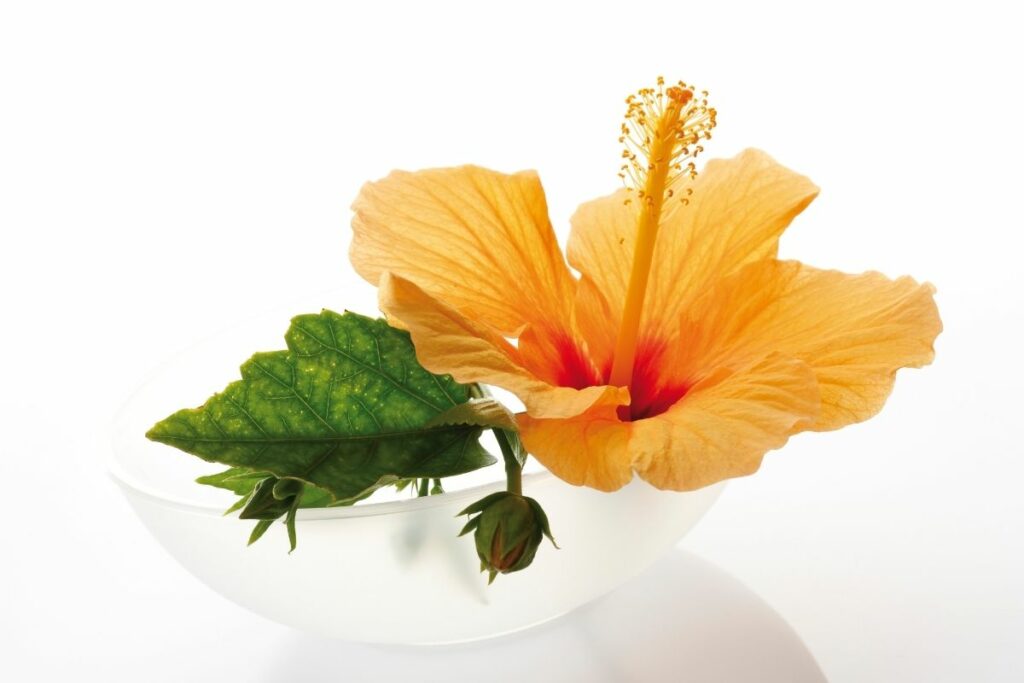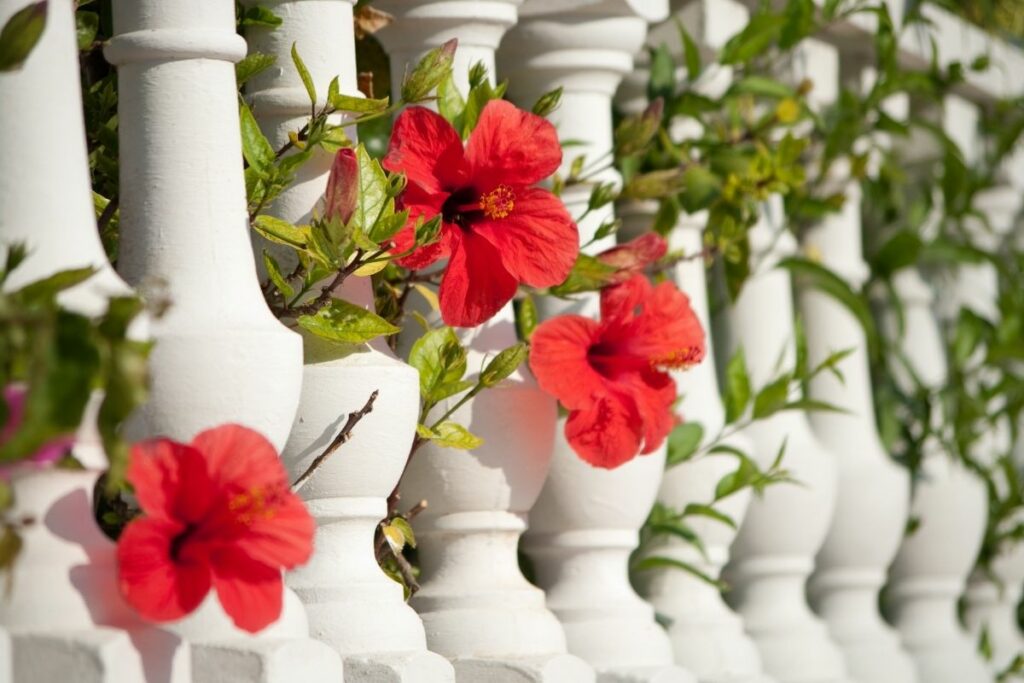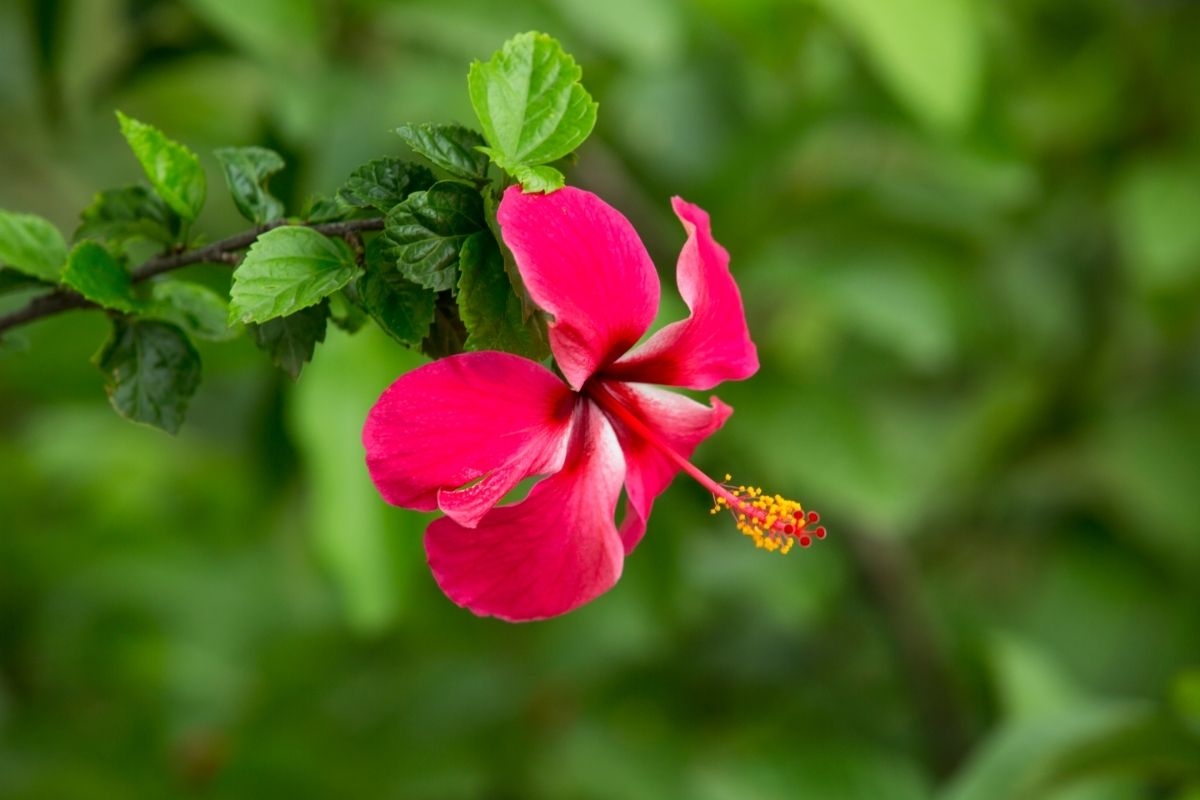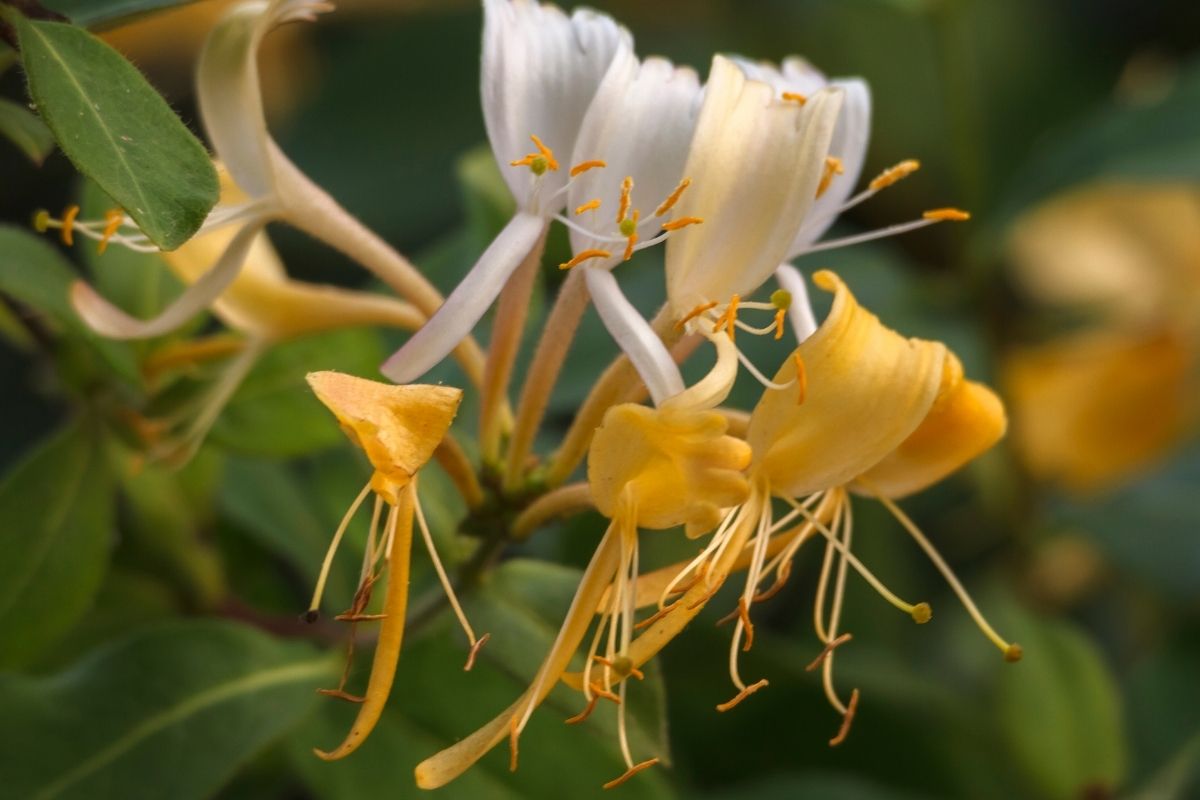
Hibiscus is a beautifully colorful plant that is used for a wide variety of purposes.
But if you choose to grow a hibiscus plant in your garden, you may be wondering whether it will survive the cold, winter months. Especially if you’ve chosen a more tropical hibiscus variety!
So, can hibiscus survive the winter?
The good news is that even though this is a summer flowering plant that is used to higher temperatures, there are some hibiscus varieties that are able to tolerate some colder weather.
It’s important to note that the vast majority of hibiscus plants aren’t able to cope with temperatures below freezing. So it will ultimately depend on the climate of your garden.
If your garden experiences the occasional frost, then hibiscus should be able to mostly survive this. The important thing will be to ensure that the roots of the plant don’t die.
If the roots freeze, then the plant won’t be able to survive through the cold winter months.
Does your garden tend to suffer through longer freezing cold periods? Then you will be better off opting for a hardy variety of hibiscus that can survive temperatures as low as -20 degrees Fahrenheit.
One of the most popular hardy hibiscus varieties includes the rose mallow, or Hibiscus moscheutos. These hardy hibiscus plants will go dormant through the winter period, and sprout fresh blooms in the springtime.
The general rule of thumb is that because hibiscus tends to be one of the more tropical plants, it won’t cope well with winter temperatures in certain regions.
If you live in an area that sports milder temperatures, then your hardy hibiscus and tropical hibiscus varieties will be able to survive throughout the whole year.
What Do You Do With Hibiscus In The Winter?

So now that we know that tropical hibiscus won’t be able to survive a cold winter season, we can think about how to care for it during the colder months.
If you want to plant your hibiscus during the winter months, it will be best to do this in a pot.
This is because you can easily move your potted hibiscus inside when the temperature drops. This is the best way to care for your hibiscus in areas that feature a cold climate.
You can beat the chill by bringing your potted hibiscus into a warm room within your home.
First, you will need to remove roughly a quarter of the growth on your potted hibiscus plant. This will save you from having to clear away any yellow and dead leaves during its stay indoors.
Now you can move your potted hibiscus indoors. Make sure to keep your hibiscus plant away from any sudden drafts so as to protect it. Once temperatures rise above freezing, you will be able to place your potted plant back outside.
Make sure to do this when there is no chance of a sudden frost, otherwise all that hard work will have been for nothing.
What Temperature Is Too Cold For A Hibiscus?
Ultimately it will depend on the variety of hibiscus that you have chosen to grow in your garden. If you have opted for a tropical hibiscus, then anything below 50 to 32 degrees Fahrenheit will be far too cold for your plant.
If you keep your tropical hibiscus in pots, you will need to bring these inside during the winter months so as to keep your plants alive.
If you have a hardy hibiscus variety in your garden or pots, then anything under -20 degrees Fahrenheit will be far too cold for this plant.
If you live in an area where the temperature plummets below -20 degrees Fahrenheit, you will need to bring your plants inside.
Remember that your hibiscus plant is unlikely to flower during the colder months. Depending on the variety, it may be able to survive the occasional frost.
However, if you live in a colder climate that suffers from extreme weather conditions, your hibiscus is unlikely to survive if left outdoors.
How Do I Protect My Hibiscus In The Winter?
The best way to protect your hibiscus in winter is to bring it indoors. If you have planted your hibiscus shrub in your flowerbed, then you will need to dig this up and place it in a well draining pot.
Make sure to use the right type of compost with your hibiscus plant so that it can stay happy.
Next, you will need to bring your hibiscus plant indoors. It will be best to keep the potted hibiscus near a south facing window so that it will get all of the sun that it needs to thrive.
Your potted hibiscus will need to have between 4 to 5 hours of direct sunlight so that it can keep flowering.
It will be crucial to choose the warmest room in your house, with nighttime temperatures of no less than 55 degrees Fahrenheit. You will also need to water your potted hibiscus so that the soil is moist, but never soggy.
Can Hibiscus Survive Winter In Pots?
Yes, hibiscus can survive winter in pots, as long as you bring those pots inside. This is because certain varieties can’t cope well with extremely cold temperatures.
If you know that your climate tends to plummet below freezing, you will need to bring your tropical hibiscus varieties inside.
If you have opted for a hardy hibiscus variety in pots, then it will be able to survive up to -20 degrees Fahrenheit.
Anything less than this and you will need to bring it inside so that the roots don’t freeze.
In Summary
And there you have it! Ultimately, knowing whether your hibiscus plant will survive the winter will be dependent on the climate of your particular garden.
If the temperatures don’t dip below freezing – 32 degrees Fahrenheit – then you can rest assured that your hibiscus plant will be able to survive winter.
If you get the occasional frost, then your hibiscus plant should be able to cope with this.
If you tend to get long periods of freezing in your garden, then it will be better to opt for a hardy variety of hibiscus that can cope with temperatures as low as -20 degrees Fahrenheit.
These hibiscus varieties will stand a much better chance of surviving winter.
Don’t have a hardy variety of hibiscus in your garden? Then chances are that it won’t survive the winter. You can try growing your hibiscus in pots, as you can then bring these indoors when temperatures start to plummet.
- Best Hanging Plant For Low Light - September 4, 2023
- Best Indoor Plants Florida - August 28, 2023
- Best Plants For Bathroom Smells - August 21, 2023








